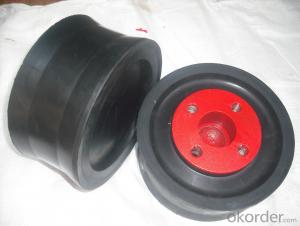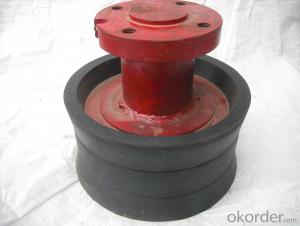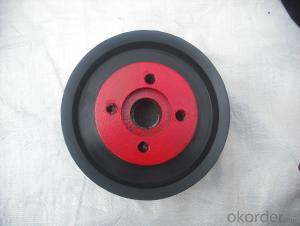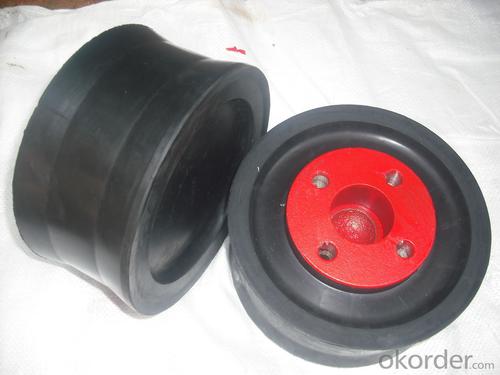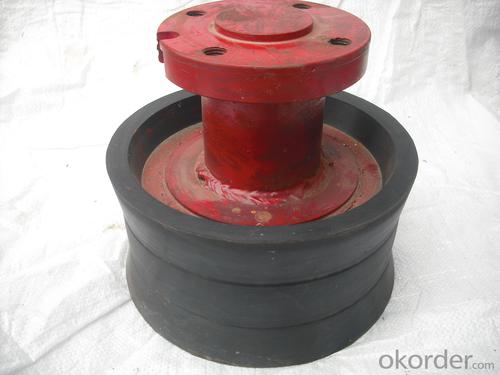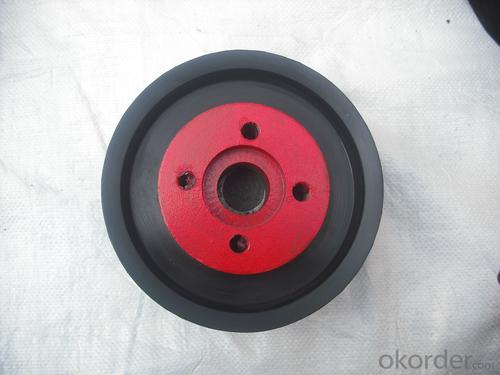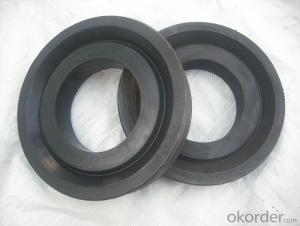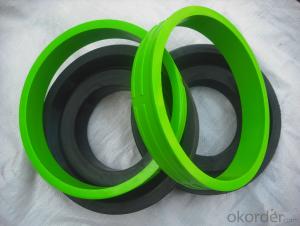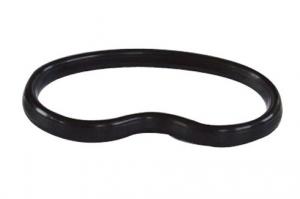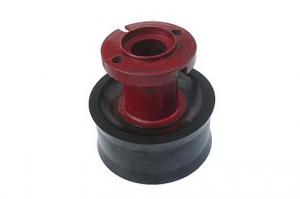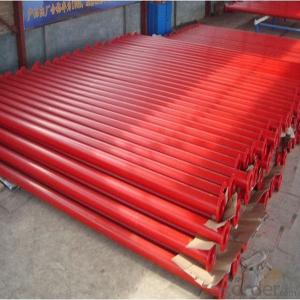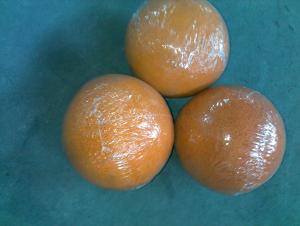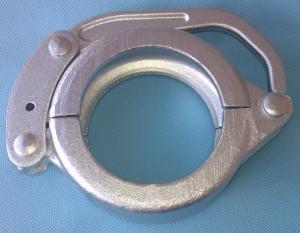ZOOMLION RUBBER PISTON DN200 WITH HIGH QUALITY
- Loading Port:
- Tianjin
- Payment Terms:
- TT OR LC
- Min Order Qty:
- 3 set
- Supply Capability:
- 500 set/month
OKorder Service Pledge
OKorder Financial Service
You Might Also Like
Zoomlion concrete pump rubber piston DN200
Schwing/ Sany/PM/Zoomlion concrete pump rubber piston
name | Concrete pump piston |
size | DN200 for Schwing DN230 for Schwing DN200 for PM entirety piston DN230 for PM entirety piston DN180 for Zoomlion piston DN200 for Zoomlion piston DN220 for Zoomlion piston DN230 for Zoomlion piston DN180 for Sany piston DN195 for Sany piston DN200 for Sany piston DN230 for Sany piston DN260 for Sany piston DN280 for Sany piston Other sizes and types upon request |
Material | PUR Polyurethane,natural rubber |
Applacation | Used in concrete pump truck,concrete pump,Hydrulic ram system in Construction work equipment
|
Serving brands of mounted truck concrete pump and concrete pump | Sany ,PM, Zoomlion,Schwing,CIFA and so on |
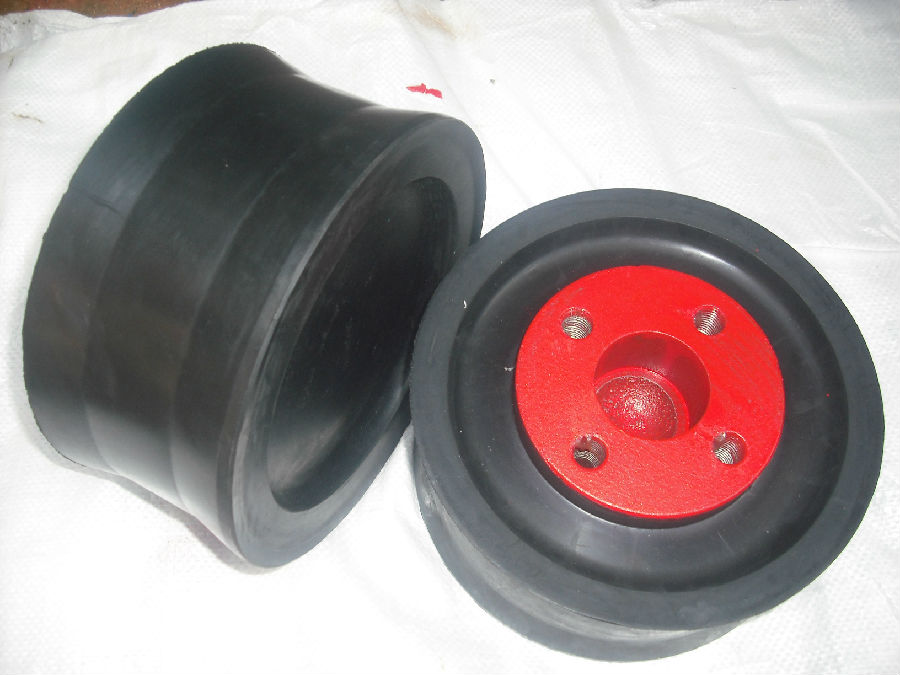
- Q: How often should concrete pump hydraulic filters be inspected and replaced?
- Concrete pump hydraulic filters should be inspected on a regular basis, ideally at least once every three months. However, the frequency of inspection and replacement may vary depending on the specific conditions and usage of the concrete pump. If the pump is operating in particularly harsh environments or is being used extensively, more frequent inspections and replacements may be necessary. It is important to monitor the condition of the hydraulic filters closely and replace them whenever they become clogged, damaged or worn out. Neglecting to inspect and replace the filters as needed can result in decreased performance and efficiency of the concrete pump, as well as potential damage to the hydraulic system.
- Q: Are there any cost-effective alternatives to original concrete pump spare parts?
- Yes, there are cost-effective alternatives to original concrete pump spare parts available in the market. These alternatives, often referred to as aftermarket parts, are manufactured by third-party companies and offer similar quality and functionality as the original parts but at a lower price. However, it is crucial to ensure that the aftermarket parts are compatible with the specific make and model of the concrete pump to ensure proper fit and performance.
- Q: How often should concrete pump outriggers be inspected and maintained?
- Concrete pump outriggers should be inspected and maintained regularly to ensure their safe and efficient operation. It is recommended to inspect and maintain concrete pump outriggers before each use and at least once every six months. However, the frequency of inspections may vary depending on the specific conditions and intensity of use. Regular inspections should include checking the condition of the outrigger pads, hydraulic cylinders, and other components for any signs of wear, damage, or leaks. Any necessary repairs or replacements should be carried out promptly to prevent further damage and ensure the outriggers are in proper working condition. Additionally, proper lubrication of moving parts and regular cleaning of the outriggers can help prolong their lifespan and maintain their performance.
- Q: What is the name of the pump for concrete transportation?
- Concrete pump truck is modified on truck chassis. It is equipped with motion and power transmission device, pumping and mixing device, cloth device and other auxiliary devices on the chassis.
- Q: How does a hopper vibrator prevent concrete blockages?
- A hopper vibrator prevents concrete blockages by vibrating the hopper, which helps to dislodge any stuck or compacted material, allowing it to flow freely through the hopper and preventing blockages.
- Q: How much is the pump for a month?
- In the mud, the price is about 25 yuan per square, according to my experience, more than 175000 points per month can pump 7000 yuan, totaling $
- Q: What are the causes of pipe blockage in concrete pump?
- In theory, plugging is most likely to occur when 3 large stones meet at the same cross section. When the section is occupied by pebbles, the circulation area is very small
- Q: What are some common issues with concrete pump hoses and how can they be prevented?
- Concrete pump hoses can encounter various problems such as blockages, leaks, and premature wear. To avoid these issues, it is essential to adhere to proper maintenance and usage practices. 1. Blockages: Blockages can occur when concrete or debris hardens inside the hoses. Thoroughly cleaning the hoses after each use is crucial to prevent blockages. Flushing the hoses with water or using a cleaning sponge ball effectively removes any residue or build-up. Additionally, using the correct size and length of hose for the job reduces the risk of blockages. 2. Leaks: Leaks may result from wear and tear, improper connections, or hose damage. Regularly inspecting the hoses is vital to detect any signs of leakage. Any leaks detected should be promptly repaired or replaced. Properly connecting and securing the hose fittings also helps prevent leaks. 3. Premature Wear: Over time, concrete pump hoses can wear out due to factors such as abrasion, bending, and exposure to harsh chemicals. Handling the hoses with care and avoiding dragging them on rough surfaces is important to prevent premature wear. Using protective sleeves or guards provides additional protection against abrasion. Regularly inspecting the hoses for signs of wear and replacing them when necessary is essential. 4. Storage Practices: Improper storage of concrete pump hoses can cause damage and reduce their lifespan. Storing the hoses in a clean and dry environment away from direct sunlight and extreme temperatures is recommended. Properly coiling the hoses and avoiding sharp bends or kinks helps maintain their integrity. 5. Pressure Management: Exceeding the recommended pressure limits can result in hose bursts or failures. Ensuring that the concrete pump operates within the specified pressure range is crucial. Regularly inspecting the pressure gauges and monitoring the pumping process aids in preventing over-pressurization. By adhering to these preventive measures, conducting regular inspections, and performing necessary maintenance, the common issues associated with concrete pump hoses can be minimized. This, in turn, leads to improved performance and increased longevity of the hoses.
- Q: How can a faulty electric motor affect the pump's performance?
- A faulty electric motor can have a significant impact on the pump's performance. Firstly, the motor is responsible for providing the necessary power to drive the pump. If the motor is faulty, it may not be able to generate the required amount of power, leading to a decrease in the pump's performance and overall efficiency. This can result in reduced flow rates and lower pressure output, leading to inadequate functioning of the pump. Moreover, a faulty motor can also lead to issues such as increased energy consumption and overheating. If the motor is not functioning properly, it may draw excessive electrical current, causing higher energy usage and increased operational costs. Additionally, an overheating motor can result in damage to the pump and other related components, further impacting performance and potentially leading to costly repairs or replacements. Furthermore, a faulty motor can also impact the reliability and longevity of the pump. Continuous operation with a faulty motor can put excessive strain on the pump, leading to premature wear and tear, increased maintenance requirements, and a shorter lifespan. This can result in frequent breakdowns, downtime, and a decrease in overall productivity. Overall, a faulty electric motor can have various negative effects on the pump's performance, including lower flow rates, reduced pressure output, increased energy consumption, overheating, and decreased reliability. It is crucial to regularly inspect and maintain motors to ensure their optimal functioning and avoid any detrimental impacts on the pump's performance.
- Q: How can one ensure proper alignment and positioning of concrete pump spare parts during installation?
- Achieving the desired alignment and positioning of concrete pump spare parts during installation is crucial for the pump's efficient and safe operation. Here are some important steps to follow: 1. Familiarize yourself with the manufacturer's instructions: Before starting the installation process, carefully read and understand the instructions and guidelines provided by the manufacturer. These instructions will give you specific information on how to align and position the spare parts for your concrete pump model. 2. Prepare the work area properly: Clear any debris, dust, or obstacles from the work area that could hinder the installation process. A clean and organized work environment will make it easier to accurately position and align the spare parts. 3. Use appropriate lifting equipment: Concrete pump spare parts can be heavy and require special lifting equipment to prevent damage or injuries. Utilize cranes, hoists, or forklifts to lift and position the spare parts accurately and safely. 4. Employ precise measuring tools: Invest in high-quality measuring tools like laser levels, alignment guides, and precision measuring tapes. These tools will help you ensure precise alignment and positioning of the spare parts during installation. 5. Verify dimensions and specifications: Before installing any spare part, compare the dimensions and specifications provided by the manufacturer with the actual part. This will help you identify any discrepancies or potential issues that need to be addressed before installation. 6. Follow a systematic installation process: Begin with the main components of the concrete pump and gradually proceed to the spare parts. Follow a step-by-step approach, meticulously aligning and positioning each spare part according to the manufacturer's instructions. 7. Seek professional assistance if necessary: If you are uncertain about the proper alignment and positioning of certain spare parts, don't hesitate to seek professional assistance. Consulting experienced technicians or contacting the manufacturer's customer support can provide valuable guidance and ensure correct installation. 8. Perform a final inspection: Once all the spare parts are installed, conduct a thorough inspection to verify the alignment and positioning. Check for any visible gaps, misalignments, or irregularities. Immediately address any issues to ensure the proper function and longevity of the concrete pump. By following these steps and paying attention to detail, you can guarantee the proper alignment and positioning of concrete pump spare parts during installation, resulting in a dependable and efficient pump system.
Send your message to us
ZOOMLION RUBBER PISTON DN200 WITH HIGH QUALITY
- Loading Port:
- Tianjin
- Payment Terms:
- TT OR LC
- Min Order Qty:
- 3 set
- Supply Capability:
- 500 set/month
OKorder Service Pledge
OKorder Financial Service
Similar products
Hot products
Hot Searches
Related keywords
